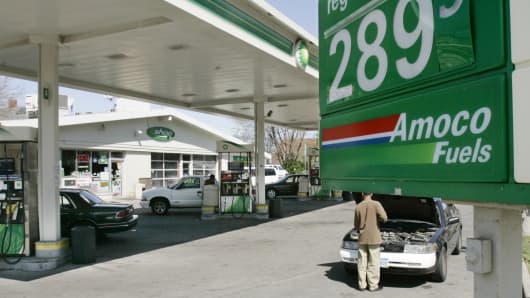
At two plants in Michigan,
General Motors is
laying off workers. At others, it's hanging out the "help wanted"
sign.The difference between them boils down to a steep fall in gas
prices. The plants where there are layoffs produce fuel-efficient
passenger cars; the others produce pickups, SUVs and multipurpose
vehicles.
Climate change be damned—American drivers want their road monsters.
A
year ago, many industry analysts were proclaiming a dramatic and
seemingly permanent shift to smaller, more fuel-efficient vehicles in a
market where the mantra had traditionally been "bigger is better."
But
such forecasts have flown out the window now that the price of gasoline
has fallen to less than $3 a gallon in much of the
country. Instead, demand for light trucks has been soaring in recent
months, while small cars and, in particular, high-tech hybrids,
plug-ins and battery-electric vehicles, have been tumbling off the
sales charts.
As fuel prices have fallen, so has the fuel economy of the typical new
vehicle, despite mandates to improve it, according to the University of
Michigan Transportation Research Institute (UMTRI).
As recently as
August, the average was 25.8 miles per gallon; it fell to just 25.3
miles per gallon last month. UMTRI researcher Michael Sivak noted there
has been "less demand for more fuel-efficient vehicles because of the
decreasing price of gasoline."
Glass half full?
For automakers, it's a case of a half-empty or half-full glass. Small,
fuel-efficient vehicles have rarely generated big profits, certainly
not when compared to the likes of full-sized SUVs and pickups, such as
the Chevrolet Silverado or Ford F-150. Just this week, Ford CEO Mark Fields said the pickup is about the single biggest contributor to Ford's profits.
Ford this week launched production of the 2015 F-150,
an all-new version replacing its traditional steel body with one made
of lightweight aluminum. The reduction of as much as 750 pounds mass
should increase fuel economy by anywhere from 5 percent to 20 percent,
according to Fields.
Compounding
the industry's challenge, manufacturers must also meet strict mandates
set out by California regulators, including minimum sales targets for
so-called zero-emissions vehicles, such as the Focus Electric, the Tesla Model S and the upcoming hydrogen fuel cell vehicles Honda and Toyota plan to launch next year. Recent sales trends suggest that complying with the rules will be costly and difficult.
So, while lower fuel prices may be great for the American consumer, they definitely have their downside.
(b) Using a diagram explain the following statement: Petrol and
SUV's are complements. [4 Marks]
(c) Using the article and your knowledge of economics discuss the challenges car manufaturers are facing. [8 Marks]